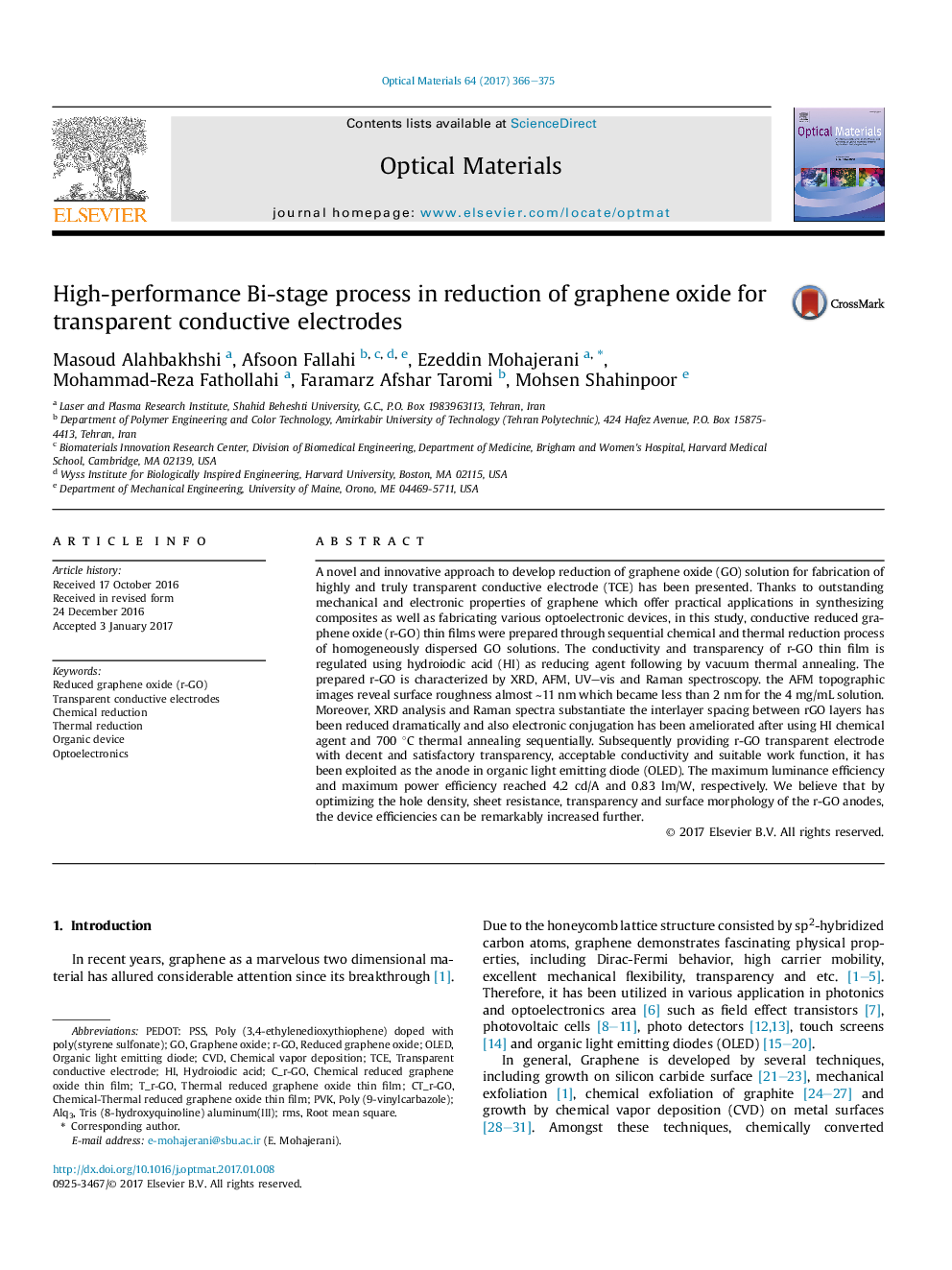| Article ID | Journal | Published Year | Pages | File Type |
|---|---|---|---|---|
| 5442722 | Optical Materials | 2017 | 10 Pages |
Abstract
A novel and innovative approach to develop reduction of graphene oxide (GO) solution for fabrication of highly and truly transparent conductive electrode (TCE) has been presented. Thanks to outstanding mechanical and electronic properties of graphene which offer practical applications in synthesizing composites as well as fabricating various optoelectronic devices, in this study, conductive reduced graphene oxide (r-GO) thin films were prepared through sequential chemical and thermal reduction process of homogeneously dispersed GO solutions. The conductivity and transparency of r-GO thin film is regulated using hydroiodic acid (HI) as reducing agent following by vacuum thermal annealing. The prepared r-GO is characterized by XRD, AFM, UV-vis and Raman spectroscopy. the AFM topographic images reveal surface roughness almost â¼11 nm which became less than 2 nm for the 4 mg/mL solution. Moreover, XRD analysis and Raman spectra substantiate the interlayer spacing between rGO layers has been reduced dramatically and also electronic conjugation has been ameliorated after using HI chemical agent and 700 °C thermal annealing sequentially. Subsequently providing r-GO transparent electrode with decent and satisfactory transparency, acceptable conductivity and suitable work function, it has been exploited as the anode in organic light emitting diode (OLED). The maximum luminance efficiency and maximum power efficiency reached 4.2 cd/A and 0.83 lm/W, respectively. We believe that by optimizing the hole density, sheet resistance, transparency and surface morphology of the r-GO anodes, the device efficiencies can be remarkably increased further.
Keywords
Related Topics
Physical Sciences and Engineering
Materials Science
Ceramics and Composites
Authors
Masoud Alahbakhshi, Afsoon Fallahi, Ezeddin Mohajerani, Mohammad-Reza Fathollahi, Faramarz Afshar Taromi, Mohsen Shahinpoor,
